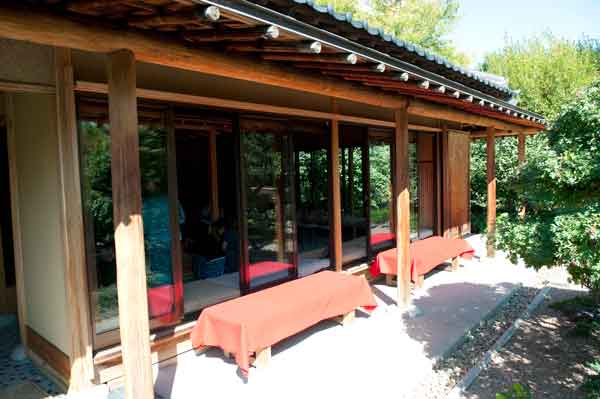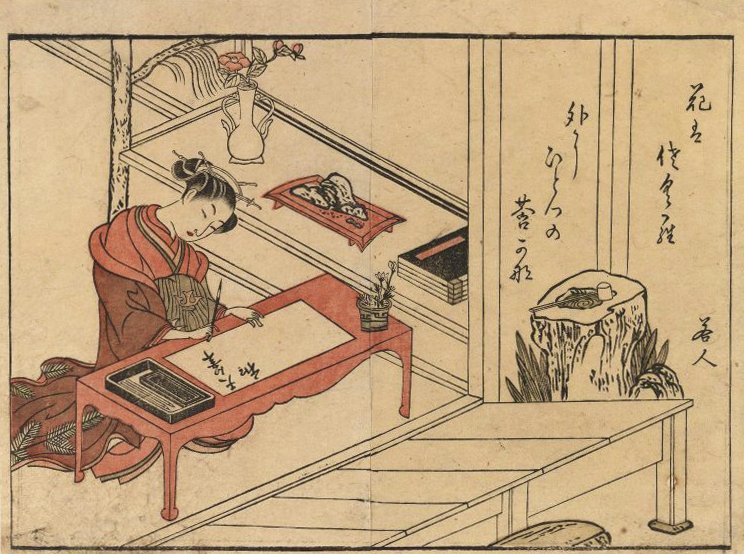Haiku Walk
Take a walk through the Japanese Garden and learn about Japanese haiku poetry! The Haiku Walk begins at either of the gated entrances to the Japanese Garden, Shofu-en ("Garden of Pine and Wind") and continues throughout the garden.
Haiku is an important form of Japanese poetry that is simple yet beautiful. Each poem captures a moment in nature and the world around you as you experience it. Tap the images below to read haiku poems written about Shofu-en. Try to guess what each one is about and learn to write your own.
Japanese Garden Gate
Heavy door open
Hides garden tranquility
Pristine world inside

This haiku is about the gates to the Japanese Garden. Gates are very important elements in a Japanese Garden because they symbolize leaving the regular world and entering a special garden space. Look for more on your walk!
Maple Leaf
Seven-fingered leaves
Stretching from slender branches
Summon you to tea

This haiku is about a maple tree in the tea garden. Japanese gardens have plants like maple trees that showcase the beauty of each season. As you explore the garden, keep an eye out for seasonal changes.
Japanese Tea House
Trickling water welcomes
Tiled-roof ceremony
Please remove your shoes

This haiku is about the Japanese tea house, where Japanese tea ceremonies are held. Tea ceremonies are special events where guests drink green tea and eat carefully prepared food.
Snow-viewing lantern
Crouched body of stone
With shoulders to collect snow
Snow-viewing lantern

This haiku is about a stone snow-viewing lantern, or yukimi. This lantern is wide and round and shows off the beauty of winter snow as it collects on top. There are four stone lanterns in the Japanese Garden—can you find the other three?
Birch Tree
Birch tree weeping low
Let leaves caress your face
Over wooden bridge

Can you find the wooden bridge in the Japanese Garden? Find the bridge and stand in the center. Hold your hand up vertically between your eyes. Do you see the same things on each side? In this garden, probably not. The way each side looks different from the other is an important aspect of the way Japanese Gardens are designed.
Pine Tree
Starbursts of needles
Form green clouds over garden
With their tiered branches

This haiku is about a pine tree. Do the trees' flat, horizontal branches and puffs of needles remind you of mountain clouds? In Japanese Gardens, plants, rocks, or other features look like or suggest other things from nature.
A tree branch
blowing in the wind
We are blind to her
Until she plays among trees
Invisible friend

This haiku is about wind. Can you hear it blowing? Japanese Gardens encourage you to relax and pay attention to things in nature that you might not always notice, like the sound of the wind or the changing of the seasons.
Write your own haiku poem
A Haiku poem is about what you see, hear or feel at the moment you're writing it. A haiku always has only three lines, and they don't need to rhyme. There are only a few rules you need to follow when writing a haiku.
The first line has five syllables.
The second line has seven syllables.
The third line has five syllables.
 |
 |
 |

